Packaging and accessories
If you thought R8’s limited-edition briefcase was impressive, wait until you unbox RS8. The DAP is shipped in a titanium/silver printed outer box, inside of which you’ll find a genuine leather presentation case housing the DAP and accessories.
On opening the box, you’ll find a translucent cover sheet with a HiBy RS8 Titanium logo. The hardened case is kept inside a generously large drawstring pouch, and finished with a supple black leather exterior, expertly stitched and embossed, complete with a magnetic flap and brass-studded ornaments. It’s genuinely one of the most stylish unboxing presentations I’ve experienced for any audio product to date. You can watch my full unboxing video here:
The case interior is split into two sections. The top section holds RS8 and an embossed titanium owner’s card, set into cutouts inside a suede-covered foam shelf. Lifting the top shelf reveals a second suede-covered foam block with three carboard boxes, each inside their own cutout.
The two outermost boxes contain HiBy-branded cables: a proprietary USB-C to digital coax cable, and a USB-C to C charging and data transfer cable. The middle box holds the genuine leather RS8 case. There’s also an envelope inside the drawstring pouch with a small printed quick-start guide, warranty card, spare plastic screen protector, and a thank-you letter from HiBy (in Chinese).
Unlike the tan-coloured R8 case or tan and green RS6 cases, I much prefer the RS8 case design. The leather is a much higher quality, and the case material is thicker and stiffened for a tighter fit and better protection. HiBy has paid closer attention to small details, like the cutout at the bottom of the case that doesn’t cover the output port labels (as is does with both R8 and RS6 cases). The tighter fit also means RS8 isn’t likely to slide out of the case very easily, especially since the side buttons – which protrude through a cutout – act as a ‘stopper’.
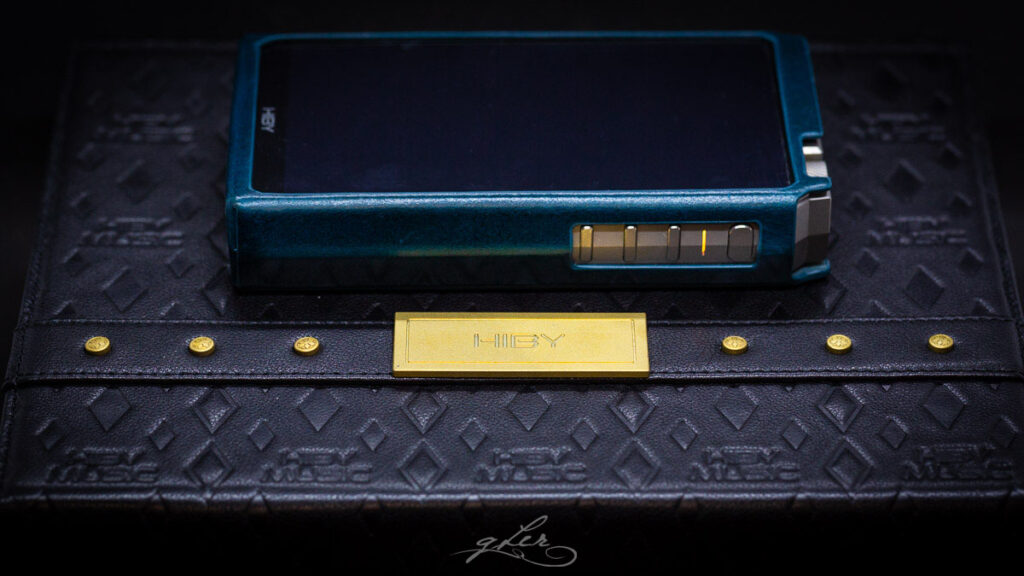
It’s not the most protective case I’ve seen though, with large areas (notably the top, back, and side buttons) exposed to the elements. As I mentioned earlier, I suggest you use the spare screen protector to cover the back, at the very least to protect it from minor scratches.
Speaking of which the pre-applied front screen protector is a nice touch, even though mine has a few small bubbles showing through on the bottom left side of the screen. I would have liked to see tempered glass protectors included for the price, but with such a tight-fitting case I’m not sure they would fit. I also would have liked the RS8 cutout in the storage box to be large enough to fit the player-plus-case, which would have made it a useful way to store the player when not in use.
Overall, the accessories included with RS8 are well thought out, and enhance the premium feel of the product itself.
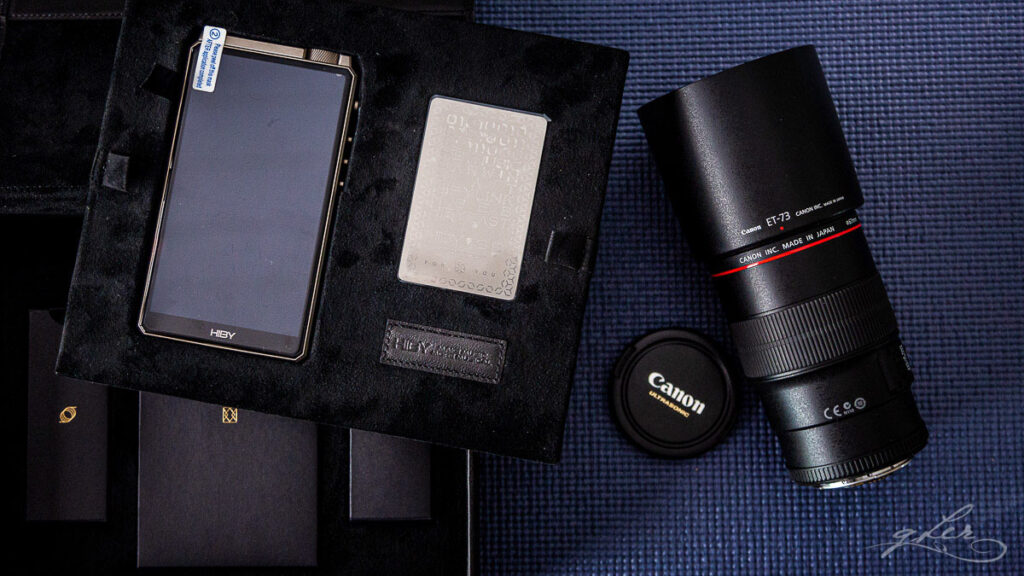
Design and specifications
RS8 is about the same size and shape as R8, with the same angular design motif, bottom-facing 3.5mm and 4.4mm ports, nested volume wheel up top, and side power and playback buttons with a multi-colour status LED in-between.
The ALPS volume wheel features a pure titanium cap over an aluminium alloy mechanism and stainless-steel rotary shaft. Looking closely, it really shows off the precision titanium finish, with evenly spaced notches, and feels much smoother to use with a satisfyingly liquid friction compared to R8’s somewhat looser version and RS6’s undersized dial.
Like the R8 and RS6, the volume dial doesn’t have click feedback, and sometimes takes a second to activate a volume change, so you can’t accurately change volume up or down unsighted. That said, the volume ramp is gentle, so you’re not going to blow your ears off if you accidentally flick the wheel. You can also disable the wheel (and side buttons) when the screen is locked, for further safety, and set a volume cap in software settings.
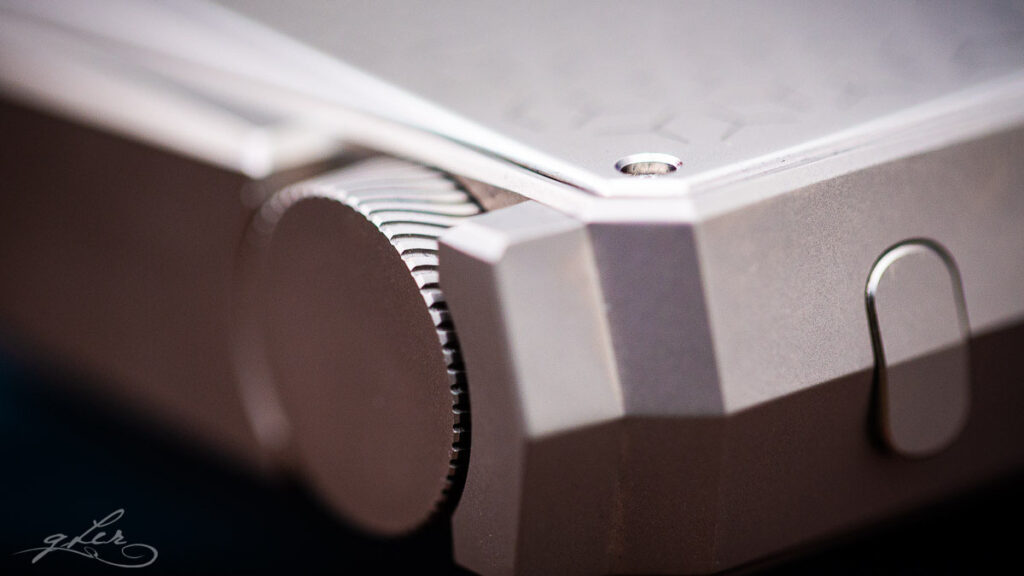
RS8 features the same dual 3.5mm/4.4mm output ports at the bottom of the DAP, with dedicated line out ports on one side and headphone ports on the other. Be careful if you’re coming from RS6, as the position of these ports are reversed on the RS8, just as they are on R8.
Helpful hint: you can quickly flip the screen 180-degrees if you’d prefer to use the DAP with the output ports on top. Simply select the option from the drop-down menu by swiping down from the top of the screen.
The side buttons have a solid, tactile feel to them, and the way they’ve been angled makes it very easy to feel for and use them blind. None of the buttons feel loose in any way, and it appears they are made from the same titanium material as the shell. A small LED between the power and playback buttons shows current bitrate and charging mode, and can also be switched off in software settings if you’d prefer not to use it.
On the opposite (left) side, RS8 features the same push-pull MicroSD card slot as the RS6 (and most other DAPs), doing away with the sim tray design from the R8. This makes it easier to quickly insert and remove cards, but you’ll need to first remove the case, which covers the card slot while in use. RS8 supports card sizes up to 2TB, but also supports external drives via USB-C, so there are ways and means to add more storage should the built-in 256GB capacity not be enough for your music files.
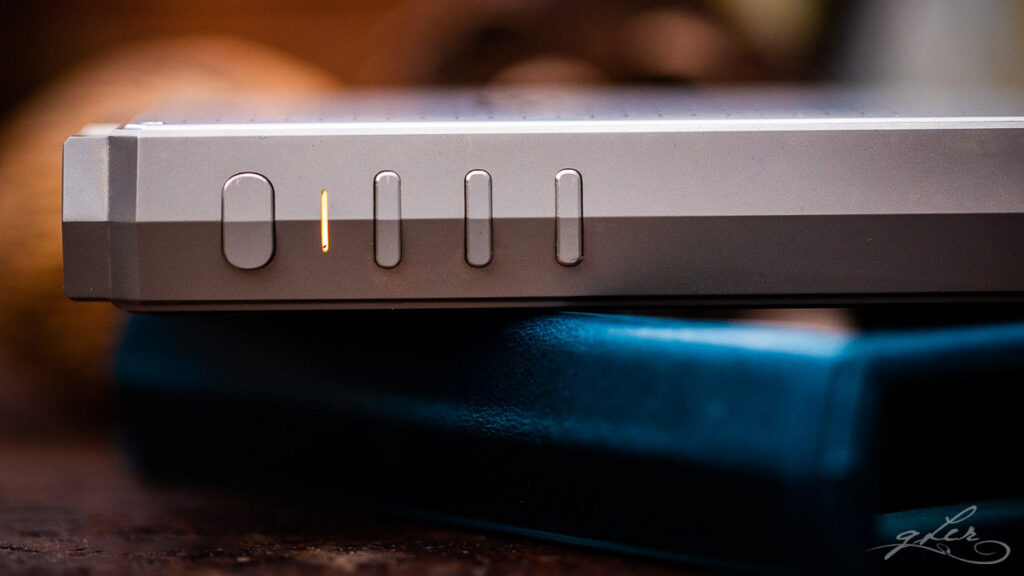
On the front, the 5.5” IPS LED screen has the same 1080P resolution as the R8 screen, but bumped up to 443PPI for better clarity. It also features a newer version of fingerprint- and scratch-resistant Corning Gorilla Glass, although it’s always best to keep the included screen protector in place to prevent minor scuffs and scratches. The display is very bright and vivid, especially at full power, and bright enough even at 50% or less to conserve battery life. Touch sensitivity is excellent, and the useful tap-to-wake feature is active by default.
The back plate, while not having any function other than heat rejection, is a thing of beauty. Instead of a plain black (R8) or carbon-like (RS6) glass plate, the pure titanium back plate on RS8 features an intricately embossed pattern, alternating between matte and gloss titanium, with various inscriptions and details below the RS logo.
I’m not surprised HiBy kept the back of the leather case open to expose the back plate, rather than covering it up with metal grilles. This is not something you’d want to cover up, and I often find myself turning the player over while listening to music to admire the design.

Internally, RS8 is just as impressive, if not more so. The full list of specifications includes:
- Darwin II discrete R2R DAC with 184 high-precision resistors and 12 high-speed electronic switches;
- 16X native MQA hardware decoder, native DSD 1024 and ultra-hi-res PCM 1536 format support;
- Audiophile-grade audio components, including 4 Elna SILMIC II silk fibre capacitors, 47 high-capacity tantalum capacitors and 10 Panasonic thin-film POSCAPs;
- Switchable Class A/Class AB mode with dedicated dual Ti OPA1652 Class A amplifiers and 8 NXP dual bipolar transistors;
- Switchable Turbo mode for an additional 1.5V power output (7.5V up from nominal 6V);
- Two dedicated femtosecond 45.158MHz and 49.152MHz crystal oscillators;
- 12,000 mAH 46.44WH lithium polymer battery with digital, DAC, preamp and post-amp circuits supplied independently for zero interference;
- 5.5” 1080P 443PPI IPS retina+ touchscreen;
- 2.4/5GHz dual-band WiFi, Bluetooth 5.0, two-way Bluetooth (transmit and receive), including high-speed UAT, LDAC, LDAC, AptX HD and AAC support;
- Qualcomm SnapDragon 665 SoC with 8GB RAM and 256GB internal flash storage;
- Custom HiByOS with open Android 12, Google Play Store and Google Play Services; and
- Monocoque pure titanium construction, with pure copper shielded battery compartment.
As the specs above suggest, RS8 is an excellent performer. Power up time is a quick 20 seconds, and navigating the various screens, menus and music lists is mostly snappy. I did notice that, on occasion, some folders with a large number of files still take too long to parse, but I’m putting that down to HiBy not having fully optimised the new Android 12-based HiBy OS, and expect any niggling performance issues will be rectified in future firmware updates.
I did run some informal AnTuTu tests, and the results were mostly as expected, within 5% or 10% of current-generation SnapDragon 660/665 DAPs. RS8 is not breaking any new speed records, since the underlying computing hardware has only been modestly updated. Battery life is a standout upgrade, however, and, as mentioned above, RS8 has the best stamina-for-performance ratio of any DAP I know.
Overall, this is a seriously premium product, with impeccable build quality and top-of-the-line audio hardware that you’ll want to use and maintain for years to come.
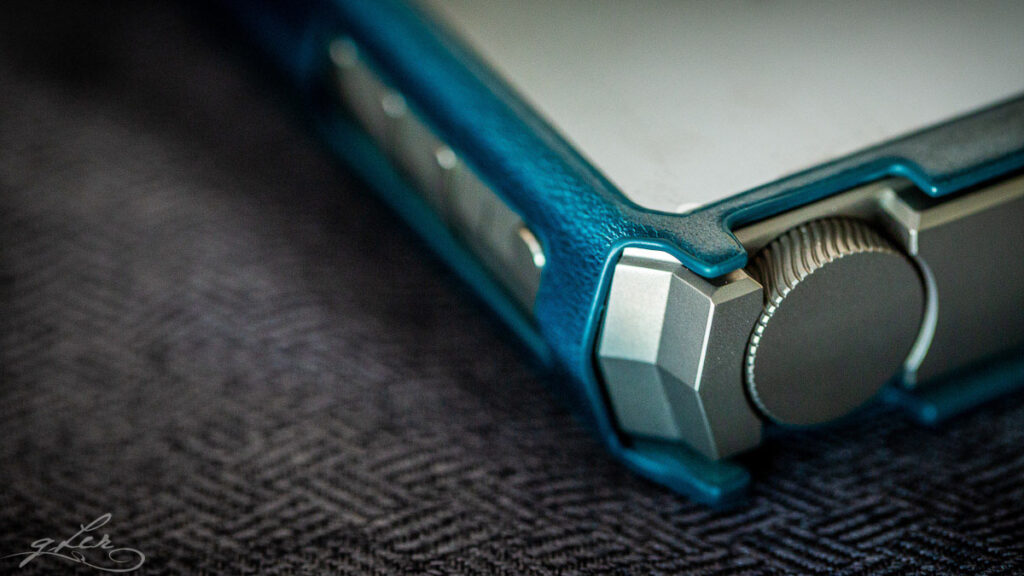
Helpful hint: if you mistakenly plug your earphones into line out, I hope you have medical insurance. Jokes aside though, line out volume on the RS8 is not variable, and plugging anything here blasts the output at 100%. Only the headphone output is variable.
Also, unlike R8 and RS6, the back plate has visible screws (custom stainless-steel screws, I’m told), which presumably means it can be removed for maintenance. I don’t suggest doing this yourself, but in the unlikely event that you need to replace the battery, you can at least do it yourself without having to send the player back to China or your local agent for repair.
Continue to software features…




One Response
Redefines the term “fully comprehensive” when it comes to gear reviews!
Quite outstanding (again) in every respect.